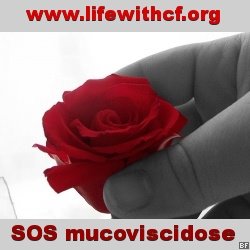http://translate.google.com/translate?u=http%3A//www.ibtimes.co.uk/articles/429375/20130130/cystic-fibrosis-hope-antibiotic-resistant-superbug-aeruginosa.htm&hl=bg&langpair=auto|bg&tbb=1&ie=UTF-8
Cystic Fibrosis Hope: Scientists Target Switch in Fatal Antibiotic-Resistant Superbug
By Hannah Osborne: Subscribe to Hannah's RSS feed
January 30, 2013 8:42 AM GMT

Around one in every 25,000 UK children born have cystic fibrosis (Reuters)
The Pseudomonas aeruginosa bacterium exploits the oxygen-limited conditions in the lungs of respiratory patients.
The infection promotes an inflammatory response that then destroys lung tissue.
It is responsible for six percent of health-related infections in NHS patients and is a major cause of death in people with cystic fibrosis.
However, researchers at the University of Cambridge have found a switch that turns on aggressive infection in the superbug, giving hope that new ways to target the bacterium can be found.
The study is published in the Royal Society's journal Open Biology.
One in every 2,500 babies born in the UK will have cystic fibrosis. Over 9,000 people in the UK are currently living with the condition, which clogs the lungs with a sticky mucus.
The infection promotes an inflammatory response that then destroys lung tissue.
It is responsible for six percent of health-related infections in NHS patients and is a major cause of death in people with cystic fibrosis.
However, researchers at the University of Cambridge have found a switch that turns on aggressive infection in the superbug, giving hope that new ways to target the bacterium can be found.
The study is published in the Royal Society's journal Open Biology.
One in every 2,500 babies born in the UK will have cystic fibrosis. Over 9,000 people in the UK are currently living with the condition, which clogs the lungs with a sticky mucus.
Follow us

Lead investigator Martin Welch said: "This is particularly important because the bug is strongly associated with infections in patients with severe respiratory disease; most famously patients with cystic fibrosis - many of whom eventually succumb to P. aeruginosa infections.
"Counter-intuitively, the lung tissue of such patients is oxygen-limited, so this could trigger the pathway."
New treatments
When P. aeruginosa encounters low-oxygen conditions, it triggers a mechanism called the Type III Secretion System, which injects toxins directly from the bacterium into the host cell. They then subvert their function, leading to cell death.
The switch identified has been named the glyoxylate shunt, which is activated in low-oxygen conditions. This results in an enzyme called isocitrate lyase (ICL) being expressed and activation of the T3SS.
When there is no ILC expression, the T3SS is not turned on and the deadly toxins are not injected.
Dr Welch said: "The mechanism by which ICL impacts on the T3SS involves a previously unrecognised regulatory pathway.
"Crucially we found that this regulatory pathway also affected the formation of antibiotic-resistant biofilms by P. aeruginosa.
"This is important because biofilm formation is known to play an important role in the pathology of cystic fibrosis-associated infections. Our study therefore opens up new potential avenues for the development of novel antibacterial therapeutic interventions."
Janet Allen, director of Research at the Cystic Fibrosis Trust said: "Many people with Cystic Fibrosis will develop Pseudomonas aeruginosa during their lives and it can cause chronic infection, which reduces lung function and therefore life expectancy.
"The Cystic Fibrosis Trust welcomes this research from the University of Cambridge which helps us to understand more about why this bacterium thrives in the lungs of those with cystic fibrosis, and could in the future lead to more treatments."
To report problems or to leave feedback about this article, e-mail: h.osborne@ibtimes.co.uk
To contact the editor, e-mail: editor@ibtimes.co.uk
Lead investigator Martin Welch said: "This is particularly important because the bug is strongly associated with infections in patients with severe respiratory disease; most famously patients with cystic fibrosis - many of whom eventually succumb to P. aeruginosa infections.
"Counter-intuitively, the lung tissue of such patients is oxygen-limited, so this could trigger the pathway."
New treatments
When P. aeruginosa encounters low-oxygen conditions, it triggers a mechanism called the Type III Secretion System, which injects toxins directly from the bacterium into the host cell. They then subvert their function, leading to cell death.
The switch identified has been named the glyoxylate shunt, which is activated in low-oxygen conditions. This results in an enzyme called isocitrate lyase (ICL) being expressed and activation of the T3SS.
When there is no ILC expression, the T3SS is not turned on and the deadly toxins are not injected.
Dr Welch said: "The mechanism by which ICL impacts on the T3SS involves a previously unrecognised regulatory pathway.
"Crucially we found that this regulatory pathway also affected the formation of antibiotic-resistant biofilms by P. aeruginosa.
"This is important because biofilm formation is known to play an important role in the pathology of cystic fibrosis-associated infections. Our study therefore opens up new potential avenues for the development of novel antibacterial therapeutic interventions."
Janet Allen, director of Research at the Cystic Fibrosis Trust said: "Many people with Cystic Fibrosis will develop Pseudomonas aeruginosa during their lives and it can cause chronic infection, which reduces lung function and therefore life expectancy.
"The Cystic Fibrosis Trust welcomes this research from the University of Cambridge which helps us to understand more about why this bacterium thrives in the lungs of those with cystic fibrosis, and could in the future lead to more treatments."
To report problems or to leave feedback about this article, e-mail: h.osborne@ibtimes.co.uk
To contact the editor, e-mail: editor@ibtimes.co.uk














Няма коментари:
Публикуване на коментар